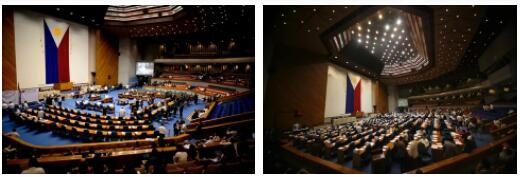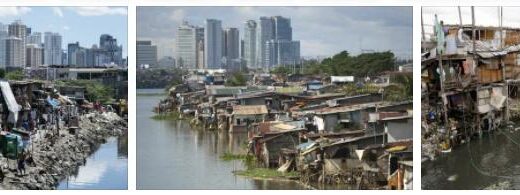Philippines Society and Economy
Population, society and rights
About one third of the population is under the age of fifteen and more than half of the residents are under the age of twenty-five.
Life expectancy at birth has increased dramatically over the past 60 years, from an expectation of 49 years in 1950 to 68.7 today. Over the years, urbanization has also increased: in 2014, the percentage of the urban population was 44.5%, while the residents of rural areas represented 55.5% of the population.
The ethnic composition of the archipelago reflects the history of the populations that have settled there over time: the main ethnic group originates from continental Asia and above all from China; followed by Americans and Hispanics. The historical legacy of centuries-old Spanish and then American domination explains the fact that the majority of the population is Christian (about 90%).
As for the level of civil and political freedom, many shadows remain: democratic mechanisms are threatened by widespread violence between clans competing for power, while freedom of the press is compromised by violence against journalists and the impunity of which the guilty enjoy.
Economy, energy and environment
The Philippines is one of the poorest states on the Asian continent. Despite this, in recent years the economy has grown at an average rate of more than 5%, and, after the sharp slowdown caused by the global economic situation in 2009, it has returned to sustained growth. The growth rate of GDP, driven by growing domestic demand expected to stabilize around an average of 6% until 2016. It is expected to grow by the same percentage – 6% – for private consumption and investment.
Although 2012 marked a new phase of export expansion, after the contraction of 2011, in the medium term the Philippine trade balance is destined to remain in deficit. However, forecasts on the gradual improvement of the global economic situation suggest an acceleration in exports. Despite the international financial crisis and the consequent reduction in the supply of work in the countries traditionally destination of Filipino emigration, the flow of remittances has continued to grow over the last two years, exceeding 28 billion dollars in 2014, compared to 19.7 of 2009.
From an energy point of view, an increase in oil production, starting from 2007, also thanks to the exploitation of off-shore deposits off the coast of Palawan, is not matched by Manila’s lesser dependence on oil imports (domestic production covers less than 10% of demand) and coal. Nonetheless, the development of geothermal and hydroelectric energy has contributed to decreasing dependence on foreign countries. Above all, the geothermal energy sector has grown, an area in which the country is second in the world for production, inferior only to that of the United States: in the medium-long term it could represent a significant resource.
Due to their geographic location, the Philippines are frequently hit by natural disasters, including earthquakes and typhoons. The most devastating in recent years, Typhoon Haiyan, struck the country in November 2013, causing more than 2,000 deaths.



